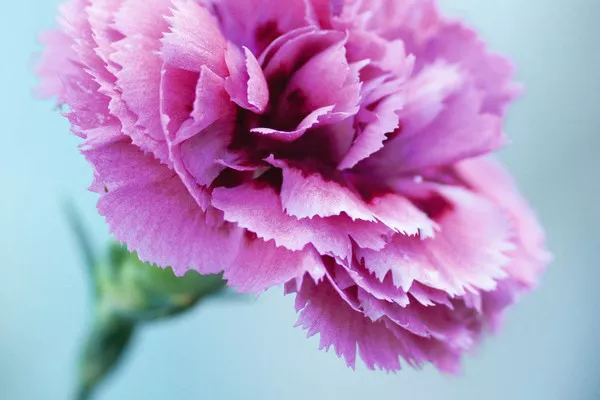Indoor plants bring beauty, tranquility, and a touch of nature into our homes. However, the presence of pests can quickly turn the indoor oasis into a battleground. Pests on indoor plants can manifest in various forms, including aphids, mealybugs, spider mites, and scale insects, among others. Successfully combating these intruders requires a multifaceted approach that considers the health of the plants and the well-being of your living space.
Identifying Indoor Plant Pests
Before delving into eradication methods, it’s crucial to identify the specific pests affecting your indoor plants. Different pests exhibit distinct signs, and recognizing them is the first step in implementing targeted control measures.
Aphids: These small, soft-bodied insects typically cluster on the undersides of leaves and feed on plant sap. Aphid infestations can lead to distorted growth and the presence of sticky honeydew.
Mealybugs: Mealybugs are tiny, cotton-like pests that often congregate in leaf axils and along stems. They feed on plant sap, causing yellowing, wilting, and a general decline in plant health.
Spider Mites: These microscopic arachnids create fine webbing on plants and feed on the sap, leading to stippled, discolored leaves. Spider mite infestations are often noticeable by the presence of webbing and tiny moving specks on leaves.
Scale Insects: Scale insects appear as small, shell-like bumps on stems and leaves. They feed on plant fluids, causing yellowing, wilting, and the eventual decline of the affected plant.
Fungus Gnats: Small, flying insects resembling tiny mosquitoes, fungus gnats lay eggs in the soil. Larvae feed on plant roots, leading to weakened plants and increased susceptibility to diseases.
Natural Remedies for Pest Control
Neem Oil: Neem oil is a potent natural pesticide with insecticidal, fungicidal, and miticidal properties. Dilute neem oil according to the manufacturer’s instructions and apply it to affected plants, focusing on the undersides of leaves where pests often congregate.
Insecticidal Soap: Insecticidal soaps are effective against soft-bodied pests like aphids and mealybugs. Mix a mild, organic insecticidal soap with water and spray it on the affected plants. Ensure thorough coverage, including the undersides of leaves.
Diatomaceous Earth: Diatomaceous earth is a natural, abrasive powder that damages the exoskeletons of pests, leading to dehydration and death. Lightly dust the affected plants and surrounding soil with diatomaceous earth, reapplying as needed.
Beneficial Insects: Introduce natural predators such as ladybugs, predatory mites, or lacewings to control pest populations. These beneficial insects feed on pests and help maintain a natural balance in your indoor garden.
Homemade Garlic Spray: Create a homemade garlic spray by blending garlic cloves with water and straining the mixture. Dilute the garlic solution and spray it on plants to deter pests. Reapply every few days as a preventive measure.
Essential Oils: Certain essential oils, such as peppermint, eucalyptus, and tea tree oil, have insect-repelling properties. Mix a few drops of the chosen essential oil with water and spray it on plants to deter pests. Test a small area first to ensure compatibility with your plants.
Cultural Practices to Prevent and Control Pests
Regular Inspection: Conduct regular inspections of your indoor plants to catch pest infestations early. Check the undersides of leaves, leaf axils, and the soil surface for signs of pests.
Isolation of Infested Plants: If you identify a plant with pests, isolate it from other plants to prevent the infestation from spreading. Place the affected plant in quarantine until the pests are successfully eradicated.
Proper Watering: Avoid overwatering, as excess moisture can create a favorable environment for pests like fungus gnats. Allow the soil to dry out between waterings, and ensure proper drainage in your plant containers.
Pruning and Removing Affected Parts: Prune and remove parts of plants that are heavily infested with pests. Dispose of the pruned material in sealed bags to prevent the pests from spreading to other plants.
Humidity Control: Many pests thrive in humid conditions. Maintain optimal humidity levels for your indoor plants, and consider using a dehumidifier if necessary.
Soil Maintenance: Keep the top layer of soil clean and free of debris to discourage pests from finding suitable habitats. Consider covering the soil surface with a layer of sand or gravel to deter pests like fungus gnats.
Commercial Insecticides for Severe Infestations
For severe pest infestations where natural remedies and cultural practices prove insufficient, commercial insecticides can be considered. Choose insecticides labeled for indoor plant use, and follow the manufacturer’s instructions carefully. Be cautious with chemical pesticides, as they can have varying effects on plants and may pose risks to human and pet health.
Integrated Pest Management (IPM) Strategies
Implementing an Integrated Pest Management (IPM) approach combines various control methods for sustainable and effective pest management. IPM strategies include:
Monitoring: Regularly monitor plants for signs of pests and beneficial insects.
Identification: Identify pests accurately to tailor control measures to specific species.
Prevention: Implement preventive measures such as quarantine, proper watering, and plant care practices.
Biological Control: Introduce natural predators to control pest populations.
Mechanical Control: Use physical methods like pruning, washing, or manually removing pests.
Chemical Control: If necessary, use chemical controls judiciously and according to guidelines.
Conclusion
Maintaining a pest-free environment for your indoor plants requires a proactive and holistic approach. By combining natural remedies, cultural practices, and, when necessary, targeted insecticides, you can create an environment where your plants thrive, free from the menace of pests. Regular monitoring, early intervention, and a commitment to plant health will contribute to the longevity and vibrancy of your indoor oasis. As you implement these strategies, remember that a balance between pest control and preserving the overall well-being of your plants is key to fostering a flourishing and pest-free indoor garden.


